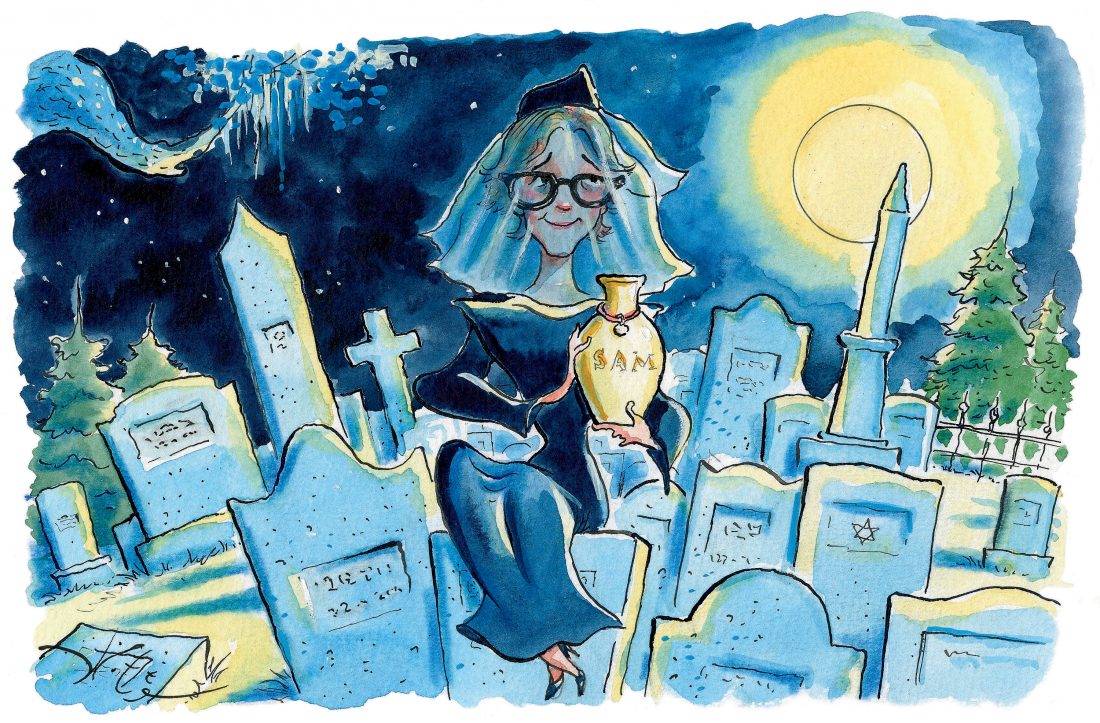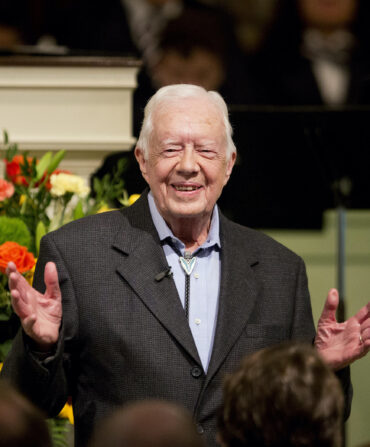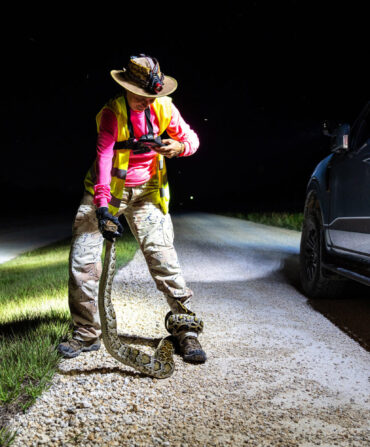Last fall, my friend Campbell Robertson wrote a piece in the New York Times describing the battle between a man named James Davis and the city council of Stevenson, Alabama, the small town in southern Appalachia where he lives. Before she died, in 2009, Mr. Davis promised his wife, Patsy, that he would lay her to rest in the front yard, just off the porch of their two-story log house, so he applied to the city council for a permit. The council, concerned about neighborhood property values and who might take care of the site after Mr. Davis went on to his own great reward, denied the request. Undeterred, Mr. Davis rented a backhoe and put her in the ground anyway, complete with vault and large headstone, arguing that there was no town ordinance specifically forbidding home burials. Almost four years and thousands of dollars in legal bills later, a compromise was reached: Mr. Davis would remove his wife’s coffin from the vault, cremate what was left of her, and stick her back inside. Apparently, the council, the state supreme court, and everybody else on the opposing side found cremated remains less objectionable (or creepy) than embalmed ones.
The case of Mr. Davis (who seems, by the way, very sweet—he and his wife met when she was seven and he eleven, and he told the Times that “there was never any couple in love like us”) got me thinking about a lot of stuff, not least of which is what to do with my own self. Life is fraught with danger, after all, and it is useful to have a plan in place. When my close family friend Anne Ross McGee died, three years ago, her daughter Elizabeth and I went straight to her file cabinet and looked under “F.” There it was, a folder helpfully marked “Anne Ross’s Funeral” in her own hand, containing strict instructions on everything from the hymns to the pallbearers. By this time, Anne Ross no longer had a yard, but had she still been possessed of one and wanted to be buried in it, I might have suggested opting for a secluded spot in the back, rather than the front, a plan of action that most likely would have saved Mr. Davis a world of trouble.
My own childhood backyard was once the site of an entire cemetery. The land had been part of a plantation that was divided around the 1930s, and our section of the property contained the headstones of the family dead. Before our house was built, our next-door neighbor supposedly dug them up and toted them off, but it’s unclear whether he moved the bodies or just the headstones. (Since for years this man was also in charge of our mutual well, and we were often without water—or at least without water that wasn’t tainted by rust and God knows what else—my money is on the latter.) Either way, it’s not like there aren’t plenty more unmarked graves back there. So far, the burgeoning pet cemetery includes: two cats; two guinea pigs; countless goldfish, parakeets, and dime-store turtles; eight dogs; and one beloved rabbit named Carrots, whose only remains, after the same neighbor’s evil dalmatians got a hold of her, was a handful of brown fur I placed inside her shoebox coffin. Since Bo the yellow Lab was the only one of the deceased who managed to rate a marker (a hoe handle and a rake handle wired together in the form of a cross), the graves are not likely to affect our property values (unlike, say, the growing crack/meth/crime problem, lack of a general economy, etc.). On the other hand, I may need to keep the house so that the animals can rest in peace—and so that I might have the option of lying down beside them when the time comes.
Which brings us back to Mr. Davis. It turns out that he is at the forefront of a growing trend. Both the stalled economy and the burgeoning “green” movement have led lots of folks to reconsider home burials much in the way the natural childbirth movement began to take hold in the 1960s. You can even hire someone called a “death midwife” to help you skip the funeral home and embalming process, a now-institutionalized practice that didn’t really exist until the Civil War (transporting all those soldiers home required a pretty foolproof method of preservation). Until then, just about everybody got rolled up in a sheet, slapped in a pine box, and buried on the back forty.
This is not a terrible idea. For one thing, the average funeral runs about $6,000 for the costs of the funeral home alone (not including the actual burial or cremation), and all those bronze caskets lined with tufted polyester “satin” are not remotely biodegradable. It’s not a full-blown trend yet, but workshops and websites to help educate people about home funerals are popping up all around the country. In Maine, where backyard burial laws are fairly lax, self-described “home funeral proponent” Chuck Lakin operates a successful business making simple wooden coffins, including those that can double as a bookcase while you’re still kicking. He also runs a make-your-own coffin workshop for the modest price of $400 to $500, which includes the finished product.
I’m thinking I might get Mr. Lakin to run me up a casket held together by wooden pegs and lined in a nice charcoal gray limousine cloth. Unlike John Prine, whose hilarious song “Please Don’t Bury Me” includes suggestions for almost any option besides putting him in “that cold, cold ground,” I sort of like the idea of spending eternity in a chic little pine box six feet under. But then, pretty much anything would be preferable to the monstrosities I turned up in a brief Internet search. There is, for example, a purple and gold LSU coffin, with the university logo printed on the inside of the velvet-lined lid, trumpeted as “a licensed collegiate memorial product.” There’s a “hunter’s casket” lined with “Realtree cloth interior,” and a shiny white casket with multicolored tulips “growing” up the sides. Had the tulips been daisies, I might have been tempted, but irony is clearly lacking in the funeral business.
This is another reason it might be best to bypass the funeral folks altogether. The thing, though, about home funerals is that you pretty much have to come face to face with, well, death. After the industry took over the entire process, the American dead became not unlike the “disappeared,” the political opposition in Central American countries that simply vanish without a trace—except in this case they’re wheeled away in a rubber body bag only to resurface, very briefly, as some unidentifiable being with bad makeup and stiff hair. This was not always the case. When my great-grandmother Fannie Moore Clements died at home, in 1957, she was carried off to be embalmed—but then they brought her right back, dressed her in a white cotton nightgown and matching peignoir, and tucked her into her bed beneath a pretty silk blanket cover. There she stayed until the burial. It should be pointed out that this did not occur in some rural outpost. It was in Nashville, Tennessee, in Belle Meade, to be exact, where apparently it was a fairly routine occurrence up to the 1960s.
Though Fannie had an enormous yard, with copious gardens that had been her sanctuary, they buried her at Mount Olivet cemetery instead, which I think is a shame. There is certainly plenty of precedent for home burial in the state. Andrew and Rachel Jackson are buried up the road in the garden at the Hermitage. And Iroquois, the great American racehorse who won the English Derby in 1881, is buried practically next door at the Belle Meade Mansion, where he was put out to stud. And then of course there’s Elvis, who was plopped down near the pool at Graceland along with his parents, Vernon and Gladys, though the city of Memphis had to grant a zoning variance before it was okay.
My mother keeps telling me she wants to be cremated so that I can dump her ashes in Richland Creek, directly in front of her granny’s old house in Belle Meade, saving a handful or two for the Gulf of Mexico near her beloved Seaside, Florida. While I hope it’s a really, really long time coming, I’ll obviously do what she asks (note to Mama: make a file called “Judy Reed’s Funeral”), but the thing about cremation is that it puts a lot of stress on those left behind. I mean, ashes are a big responsibility. My cat Sam has been dead for almost twelve years and I still haven’t figured out what to do with his. They sit in my closet in grim reproach, reminding me daily that my awful self had the cleaning lady take him to the vet to be put down. (No urn will ever be fine enough to compensate for such a hideous misdeed.)
Also, things can go so easily wrong. What if the wind turns funny and my mother’s ashes end up on Harding Road instead of in the creek? Should we hire a band and ask people to join us on the rock where she sunbathed as a girl or just drive out there one Sunday afternoon and throw them out the car window? A friend of ours in the Delta had his ashes dumped from a crop duster flying over Deer Creek while we all stood and watched, and let me say that I’m mighty glad I had on huge dark glasses and a hat. In that particular case, the full mourning veil à la Jackie Kennedy would have been even more useful.
The other day I read about an outfit in Decatur, Georgia, called Eternal Reefs. They solve the wind problem, over the ocean at least, by diving down and placing your compacted cremated remains on the ocean floor, where, in time, they will become a reef, complete with coral and fish swimming happily around. When a fellow named George Alan Thompson II, the owner of an aquarium maintenance business in Kennesaw, Georgia, died in a motorcycle accident three years ago, his widow decided it was the perfect option, and now George is somewhere off the coast of Pensacola. There’s even a little epitaph: “I’m here for the shrimp.” George was a noted jokester, but somehow I picture my mother going with something from, say, Romans instead. Which is why when I suggest this reef route, she may well decide on the white nightgown and a pine box. Just in case, I’m gonna order up two or three extra coffins from Mr. Lakin. In some states, you only have to bury six bodies to be zoned as an official cemetery. If the dogs and that box of rabbit fur count, we’re already there.








